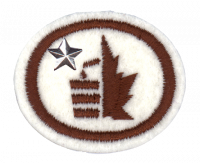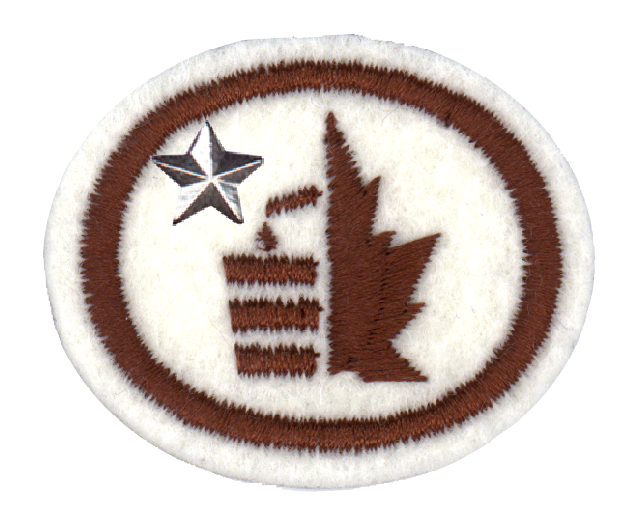Difference between revisions of "AY Honors/Maple Sugar - Advanced/Answer Key/es"
(Created page with "<noinclude>") |
(Updating to match new version of source page) |
||
| Line 9: | Line 9: | ||
{{CloseReq}} <!-- 1 --> | {{CloseReq}} <!-- 1 --> | ||
{{ansreq|page={{#titleparts:{{PAGENAME}}|2|1}}|num=2}} | {{ansreq|page={{#titleparts:{{PAGENAME}}|2|1}}|num=2}} | ||
| − | <noinclude> | + | <noinclude></noinclude> |
| − | </noinclude> | + | <!-- 2. Hacer al menos cinco grifos y hervir al menos dos litros de jarabe. --> |
| − | <!-- 2. | ||
| − | |||
| − | |||
| − | |||
| − | |||
| − | |||
| − | |||
| − | |||
| − | |||
| − | |||
| − | |||
| − | |||
| − | |||
| − | <div | + | <div class="mw-translate-fuzzy"> |
| − | + | {{clear}} | |
</div> | </div> | ||
| − | <div | + | <div class="mw-translate-fuzzy"> |
| − | + | {{clear}} | |
</div> | </div> | ||
| − | <div | + | <div class="mw-translate-fuzzy"> |
| − | + | {{clear}} | |
</div> | </div> | ||
| − | + | <noinclude></noinclude> | |
| − | <noinclude | ||
| − | |||
{{CloseReq}} <!-- 2 --> | {{CloseReq}} <!-- 2 --> | ||
{{ansreq|page={{#titleparts:{{PAGENAME}}|2|1}}|num=3}} | {{ansreq|page={{#titleparts:{{PAGENAME}}|2|1}}|num=3}} | ||
| − | <noinclude> | + | <noinclude></noinclude> |
| − | </noinclude> | + | <!-- 3. Coleccionar una hoja y la corteza de dos arces. --> |
| − | <!-- 3. | ||
| − | |||
| − | |||
| − | |||
| − | |||
| − | |||
| − | |||
| − | |||
| − | + | {{clear}} | |
| − | |||
| − | |||
| − | + | <noinclude></noinclude> | |
| − | <noinclude | ||
| − | |||
{{CloseReq}} <!-- 3 --> | {{CloseReq}} <!-- 3 --> | ||
{{ansreq|page={{#titleparts:{{PAGENAME}}|2|1}}|num=4}} | {{ansreq|page={{#titleparts:{{PAGENAME}}|2|1}}|num=4}} | ||
Revision as of 13:28, 16 April 2021
Nivel de destreza
3
Año
1989
Version
11.11.2025
Autoridad de aprobación
Asociación General
1
Para consejos e instrucciones, véase Azúcar de arce.
2
3
4
Maple wood makes good firewood. Maple wood has been used for lumber and especially for making flooring, wagons, and buildings. Furniture is its most important use. The beauty of the tree adds to the beauty of our out-of-doors. It also provides shade and cooling in the summer.
5
Healthy trees, at least 10” in diameter with many branches. Tapping is best done on the east and south sides of trees where the sun warms it in the mornings and early afternoons.
6
When warm days are above freezing and nights are below.
7
There are approximately 19 varieties of maple trees. Some that produce sweet sap are:
- Sugar maple (Acer saccharum) - also known as hard maple or rock maple.
- Silver maple (Acer saccarinum)
- Red maple (Acer rubrum) - the second heaviest producer of syrup.
- Black maple (Acer nigrum)
- Ashed leaf (box elder) maple (Acer negundo)
An additional ornamental maple tree that also produces good syrup is:
- Norway maple (Acer platanoides) - stems exude a milky fluid when squeezed or when leaves plucked.
8
Use a 7/16 or 1/2 inch bit to drill for the spigots. I would recommend the 7/16 inch size.
9
It may spoil if the sap is not kept cool or if it is kept too long before boiling it down. Spoiled sap has a slightly milky appearance. If boiled down it has a very dark appearance.
10
One story is that an Indian warrior threw his tomahawk into a maple tree on a spring morning and “sweet juice” began to flow down his tomahawk, and he caught it in his hand and drank it and found it good.
Another story is of an Indian maiden who left her pottery jar at the base of a maple tree. When she returned, her pottery jar was filled with sap due to a crack in the tree.
Most likely though is that the Indians observed insects at the sap and tried it for that reason.
11
It takes 30 - 40 quarts of sap to make one quart of syrup.
12
When boiling is started the sap looks like boiling water. As the water is boiled off the color gets darker slowly. As the sap gets close to the syrup point the bubbles get smaller. At this point the syrup tends to rise up and boil over.
Another indication is the consistency. At the syrup stage, the liquid comes off a spatula in small gooey sheets rather than drops.
With a candy thermometer, the syrup is ready when the temperature is 7° F. above the boiling point of water at your elevation. (The boiling point of water drops 1° F. for every 550 feet increase in elevation above sea level.)
13
Maple sugaring was introduced to the early settlers by the North American Indians.
14
Though some sugar houses include tours of their operation, they may charge for this. If this is not a concern, go ahead and make arrangements. If you ask nicely, or if you know someone who makes syrup on a small scale, you may be able to get a tour for free (especially if your group is willing to pitch in for a half day to keep the fires going or help collect the sap).
15
Adventist Youth Honors Answer Book/Recipes/Hominy Grits
Adventist Youth Honors Answer Book/Recipes/Butternut Squash
16
If you continue boiling the syrup until the temperature reaches 30o to 33o F. above the boiling point of water (e.g. 241o to 244o F. in Michigan) and then stir the syrup vigorously it will start to crystallize. At this point you put it into whatever molds or containers you wish before it hardens too much in the pan.
17
It is made by pouring hot syrup onto snow. As it cools it makes a delicious treat.
18
Time to quit for the year. The sap will produce a dark syrup of a low grade.


